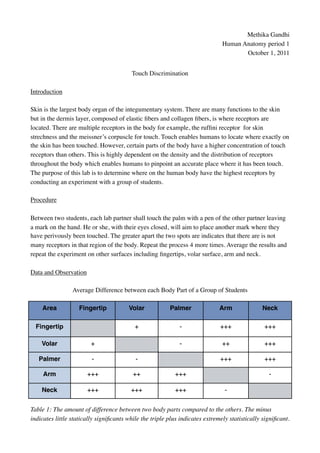Recommended
Recommended
More Related Content
Featured
Featured (20)
Product Design Trends in 2024 | Teenage Engineerings

Product Design Trends in 2024 | Teenage Engineerings
How Race, Age and Gender Shape Attitudes Towards Mental Health

How Race, Age and Gender Shape Attitudes Towards Mental Health
AI Trends in Creative Operations 2024 by Artwork Flow.pdf

AI Trends in Creative Operations 2024 by Artwork Flow.pdf
Content Methodology: A Best Practices Report (Webinar)

Content Methodology: A Best Practices Report (Webinar)
How to Prepare For a Successful Job Search for 2024

How to Prepare For a Successful Job Search for 2024
Social Media Marketing Trends 2024 // The Global Indie Insights

Social Media Marketing Trends 2024 // The Global Indie Insights
Trends In Paid Search: Navigating The Digital Landscape In 2024

Trends In Paid Search: Navigating The Digital Landscape In 2024
5 Public speaking tips from TED - Visualized summary

5 Public speaking tips from TED - Visualized summary
Google's Just Not That Into You: Understanding Core Updates & Search Intent

Google's Just Not That Into You: Understanding Core Updates & Search Intent
The six step guide to practical project management

The six step guide to practical project management
Beginners Guide to TikTok for Search - Rachel Pearson - We are Tilt __ Bright...

Beginners Guide to TikTok for Search - Rachel Pearson - We are Tilt __ Bright...
Unlocking the Power of ChatGPT and AI in Testing - A Real-World Look, present...

Unlocking the Power of ChatGPT and AI in Testing - A Real-World Look, present...
Touch lab
- 1. Methika Gandhi Human Anatomy period 1 October 1, 2011 Touch Discrimination Introduction Skin is the largest body organ of the integumentary system. There are many functions to the skin but in the dermis layer, composed of elastic fibers and collagen fibers, is where receptors are located. There are multiple receptors in the body for example, the ruffini receptor for skin strechness and the meissner’s corpuscle for touch. Touch enables humans to locate where exactly on the skin has been touched. However, certain parts of the body have a higher concentration of touch receptors than others. This is highly dependent on the density and the distribution of receptors throughout the body which enables humans to pinpoint an accurate place where it has been touch. The purpose of this lab is to determine where on the human body have the highest receptors by conducting an experiment with a group of students. Procedure Between two students, each lab partner shall touch the palm with a pen of the other partner leaving a mark on the hand. He or she, with their eyes closed, will aim to place another mark where they have perivously been touched. The greater apart the two spots are indicates that there are is not many receptors in that region of the body. Repeat the process 4 more times. Average the results and repeat the experiment on other surfaces including fingertips, volar surface, arm and neck. Data and Observation Average Difference between each Body Part of a Group of Students Area Fingertip Volar Palmer Arm Neck Fingertip + - +++ +++ Volar + - ++ +++ Palmer - - +++ +++ Arm +++ ++ +++ - Neck +++ +++ +++ - Table 1: The amount of difference between two body parts compared to the others. The minus indicates little statically significants while the triple plus indicates extremely statistically significant.
- 2. Average Mean of Touch Accuracy of a Group of Students 18.0 The Level Accuracy (mm) 13.5 14.6 11.7 9.0 7.8 7.2 4.5 4.7 0 Fingertips Volar Palmer Arm Neck Average Mean according to each Body Part Figure 1: The accuracy level compared to each surface of the body. The high the value the less receptors are located in that particular body area. Judging by the figure the neck has the least sensitive while fingertips have the greatest amount of distributive receptors. Conclusion The amount of receptors are not evenly distributed throughout the human body. Places with higher sensitivity have a higher concentration of touch receptors. In figure 1 it indicates that the average mean for the neck was 14.6 mm which is the least sensitive. While the fingertips has an average mean of 4.7 which is the most sensitive body surface in this experiment. The average difference between the fingertips and the neck are extremely statistically significant as shown in table 1. It can be concluded that the area of the body with thicker skin, for instance fingertips and palm, have greater receptors compared to other areas with a less dense skin, such as the back of the hand and arm. The hand is one of the most used part of the body therefore it is vital to be sensitive to anything. There are other factors that are needed to be taken into consideration. Each person’s body is different meaning that some people have better concentration than others to locate the exact point. Also a reason for the neck to have the least accuracy is because it is simply more difficult to pinpoint the exact location on ones own body.
